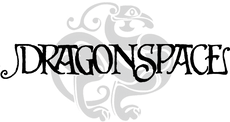
A Guide to Pagan Altars
The world of Wicca is wide and wonderful, and your personal altar is at the beating heart of your practice. Whether you’re a seasoned practitioner or a newcomer to the Wiccan arts, your altar will play a vital role. And here at Dragonspace, we’re proud purveyors of the different elements that comprise a Wiccan altar.
An altar is a spiritual and personal space, so it should only be as elaborate as what suits you. Typically, an altar is a shelf or table laden with practical and symbolic tools for your Wiccan workings. However, if you’ve got limited space at home, your altar can be contained inside a box that’s packed and unpacked to suit your purpose. Some people even have seasonal altars that change with the Wheel of the Year, or a nature altar featuring treasures found on walks and adventures. You will know the intent behind your practice, and will understand what will work best for you.
Below is a list of typical objects found on an altar and the meaning behind them:
Altar Cloth
A cloth draped over your altar both adds a beautiful aesthetic and provides powerful symbolism. The colours and symbols of your cloth might correspond with your magical intent for that day - trees for nature-based magic, or pink for spells about self-love or relationships. Cloths also serve a functional purpose - to catch any slippery spills from candle wax or ceremonial oil. Our decorative sarongs in a range of patterns can double as perfect altar cloths.
Bell
 A ceremonial bell is often used in ritual to mark the beginning or end of a practice, or important moments. They are also powerful cleansing tools, with a clear calming ring to rid your sacred space of any negative pre-existing energies. If your practice follows the elements, a bell can also symbolise air/wind.
A ceremonial bell is often used in ritual to mark the beginning or end of a practice, or important moments. They are also powerful cleansing tools, with a clear calming ring to rid your sacred space of any negative pre-existing energies. If your practice follows the elements, a bell can also symbolise air/wind.
Athame/Boline
There are two types of blades commonly used in Wiccan practice. The boline is traditionally used for physically cutting, e.g. herbs, or inscriptions on ceremonial candles. Its blade is curve-shaped like a crescent moon and can sometimes be referred to as the ‘white-handle knife’. The athame is a symbolic magical tool, used for directing energy during rituals. Its blade is pointed and double-edged and can sometimes be referred to as the ‘black-handle knife’. Some magical practices allow for the athame to be both a practical and symbolic tool, so that’s up to you to decide. You can etch or inscribe your Wiccan blades to suit your intention.
Crystal Ball
Crystal balls are powerful tools for clairvoyance and scrying. While the image of a fortune-teller crouched over a crystal ball seeing future scenes unfold is timeless, it’s not really accurate. Rather than showing fortunes like films, crystal balls are said to reflect unseen parts of the subconscious mind and inner psyche. Sometimes made of crystal minerals and sometimes of coloured glass, a crystal ball is a light, bright addition to your altar.
Goblets and Cauldrons
Many rituals will require a vessel or some kind, be it to carry potions, oils, incense, or even water for scrying. Cauldrons are an iconic image associated with witchcraft and can serve both magical and mundane purpose (they look fantastic on an altar!) Goblets and chalices can be used to hold drinkable liquids in ritual, such as sacred water or wine, and are also symbolic of the goddess’s womb.
Incense and Candles
Fire is a key part of elemental magic and manifests in burning incense, oils and candles. Specific aromas of incense and oil bear symbolic meaning - such as sage for cleansing and rose for love - and different coloured candles reflect the changing seasons, amongst other aspects of the natural world. See our full range of aromatic products here to find the right fit for your altar.
Symbols
There are many important motifs and icons that appear throughout Pagan ritual and ceremony. The pentacle is one of the most common - a five-pointed star that’s an amulet for protection and a depiction of the four orientations or elements, amongst other meanings. The triple goddess symbol is another key one, appearing as a triple moon representing the three stages of womanhood - maiden, mother and crone. Nature symbols are also abound in Pagan and Wiccan practice - from animal icons like crows and wolves to elemental symbols and the Tree of Life. Scatter these symbols on your altar as decorative items or powerful inscriptions on your practical tools.
Divinatory Tools
Your altar will also be the place for your divinatory tools, such as tarot and oracle cards, pendulums, runestones and more. Read more about divination at Dragonspace here.
Your Grimoire
And last but not least, your Grimoire or Book of Shadows will likely take pride of place on your altar - the home for your spells, potions, rituals, observations, insights and more. We’ve got a range of beautiful leather journals that would make for perfect Grimoires here, or read more about other creative and magical uses for our notebooks here.










Leave a comment